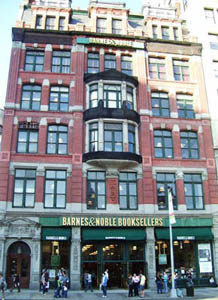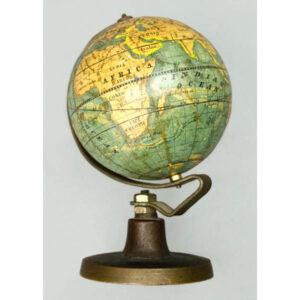Description
The Century Building, still extant at 33 East 17th Street, faces the north side of the park between Park Avenue South and Broadway. It was designed by William Schickel in the Queen Anne style and built in 1880-81 as the headquarters of the Century Publishing Company. As shown in the illustration, “The Century Co.” is written along the upper façade of the building with other indistinct lettering to the left and right that advertises The Century Magazine and St. Nicholas Magazine, both popular periodicals during the 19th century. The Century Building was designated a New York City landmark in 1993 and added to the National Register of Historic Places in 1997.
Hughson Hawley (1850-1936), a British-born architectural renderer, enjoyed a 50-year career in New York City, producing thousands of drawings during one of the great eras of American architecture, when the first skyscrapers were being constructed. He began as a theatrical set painter in his native England, moving to New York City in 1879 to paint scenery at the Madison Square Theater at the invitation of the owner. With the encouragement of the architects Francis H. Kimball and Thomas Wisedell, who had been commissioned to remodel the theater, Hawley opened an architectural rendering studio in 1880. Architects use drawings of proposed buildings to persuade prospective clients, but Hawley’s artistic and architectural skills were so extraordinary that his drawings were frequently reproduced as lithographs, advertisements, brochures and letterheads to promote the completed buildings. His style was even imitated by others. In addition to working for architects, Hawley created illustrations for publications such as Harper’s Weekly, Harper’s New Monthly Magazine, Century and exhibited at the National Academy of Design, the American Watercolor Society and on a regular basis at the Architectural League, the premiere showcase for architects and designers at the time. He retired to England in 1931 at the age of 81, and spent the remainder of his life there. Hawley’s architectural renderings were the subject of an exhibition and catalog at the Museum of the City of New York in 1998, which has many of his works in their collection. They are also in the collections of the Avery Architectural and Fine Arts Library at Columbia University and the New-York Historical Society.
William Schickel (1850-1907) was a German-American architect. Born in Germany, he emigrated to New York City at the age of 20 and immediately went to work in the offices of the architect Richard Morris Hunt. He formed William Schickel & Company in association with Isaac E. Ditmars and Hugo Kafka in 1885. In 1895, the firm’s name changed to Schickel & Ditmars, and continued under that name after Schickel’s death in 1907. He designed a number of churches for the New York diocese, including the Church of St. Vincent Ferrer (1879), St. Ignatius of Loyola (1898) and Most Holy Trinity Church in Brooklyn (1885). Schickel & Ditmars also designed the campus of St. Joseph Seminary in Yonkers, New York (1896). Today, a number of Schickel’s buildings are on the National Register of Historic Places, including St. Francis Church in Milwaukee; Basilica of Our Lady of Perpetual Help in Boston; and the Century Building, the William Schickel House and the German Library and Dispensary, all in New York City. Schickel became a Fellow of the American Institute of Architects in 1894.
Condition: Generally very good with the usual overall light toning. Some faint discoloration patches and scattered foxing. Board a bit brittle from age but stable. Early (apparently original) ebonized oak frame with rounded corners with wear and abrasions to finish.
References:
Beyond My Ken (Own work) “Barnes & Noble Union Square NYC.jpg.” [CC-BY-SA-3.0 (http://creativecommons.org/licenses/by-sa/3.0) or GFDL (http://www.gnu.org/copyleft/fdl.html)], via Wikimedia Commons (29 September 2014).
“Century Building (17th Street, Manhattan).” Wikipedia. 22 June 2013. http://en.wikipedia.org/wiki/Century_Building_(17th_Street,_Manhattan) (26 September 2014).
“J. William Schickel.” Wikipedia. 24 June 2014. http://en.wikipedia.org/wiki/J._William_Schickel (26 September 2014).
Parks, Janet, Rob Del Bagno and Frederic A. Sharf. New York on the Rise: Architectural Renderings by Hughson Hawley, 1880-1931. New York: Museum of the City of New York, 1998. pp. 7-9, 16, 39, 44-45, 50-62.
Sharf, Frederic A. “Discovering Hughson Hawley.” Museum of the City of New York. http://www.mcny.org/Exhibitions/Hawley/hawley3.htm (3 November 2004).











